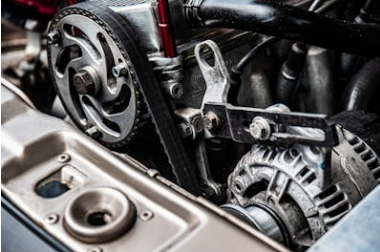In the demanding world of heavy lifting and construction, Manitowoc cranes stand out for their reliability and performance. However, even these robust machines require regular inspection and maintenance to ensure safe and efficient operation.
This article focuses on the top five Manitowoc crane parts that demand particular attention when checking for signs of wear. By understanding these critical components, crane operators and maintenance teams can prevent costly downtime and potential safety hazards.
1. Wire Ropes and Cables
Wire ropes and cables are the workhorses of Manitowoc cranes, responsible for lifting and moving heavy loads. These components endure significant stress during normal operations, making them prone to wear and tear. When inspecting wire ropes and cables, look for broken wires or strands, kinks, corrosion, flattened sections, or any reduction in rope diameter.
A reputable crane parts supplier will emphasize that even minor damage can compromise the integrity of these critical components. Industry standards dictate that wire ropes should be replaced if they show signs of more than 5% wire breakage within a single lay length. Regular inspection of these Manitowoc crane parts is not just a recommendation—it's a necessity for maintaining operational safety and efficiency.
2. Hydraulic Hoses and Fittings
The hydraulic system is the lifeblood of Manitowoc cranes, powering various functions from boom movement to outrigger deployment. Hydraulic hoses and fittings, constantly under pressure, can develop weak points over time. During inspections, pay close attention to any signs of cracks or blisters in the hose material, leaks around fittings, kinked sections, or excessive swelling.
The importance of these checks cannot be overstated. A study by the Fluid Power Safety Institute found that nearly 25% of hydraulic accidents are due to hose failures. This statistic underscores the critical nature of regular inspections and timely replacement of worn Manitowoc crane parts, particularly in the hydraulic system.
3. Sheaves and Pulleys
Sheaves and pulleys play a vital role in the smooth operation of a crane's lifting mechanism. These Manitowoc crane parts guide the wire ropes and distribute the load evenly. When inspecting sheaves and pulleys, focus on identifying any cracks or chips in the sheave groove, uneven wear patterns, excessive play in bearings, or misalignment of sheaves.
Crane maintenance experts advise that sheaves should be replaced when the groove wear exceeds 1/32 inch or 3% of the rope diameter, whichever is less. Worn sheaves can accelerate wire rope degradation and affect lifting precision, making their regular inspection a key aspect of crane maintenance.
4. Slewing Ring and Bearings
The slewing ring allows the crane's upper works to rotate smoothly, making it critical for precise load positioning and overall crane stability. When examining this large bearing, listen for unusual noises during rotation and watch for excessive play or movement. Uneven rotation or jerky movement can also indicate wear, as can the presence of metal particles in the lubricant.
A leading crane parts supplier recommends checking slewing ring bolts for proper torque at least once every 500 hours of operation. This practice helps prevent premature wear and potential failure of this crucial component. Regular inspection and proper lubrication of the slewing ring are essential for maintaining the crane's rotational integrity.
5. Boom Sections and Telescoping Components
The boom, serving as the primary lifting arm of a Manitowoc crane, often features telescoping sections for extended reach. These components endure significant stress and environmental exposure. When inspecting boom sections and telescoping components, look for cracks or deformations in boom sections, wear on telescoping surfaces, loose or damaged wear pads, and signs of corrosion, especially in pivot points and connections.
The critical nature of boom inspection is highlighted by an Occupational Safety and Health Administration (OSHA) report, which found that boom failures account for nearly 6% of crane-related fatalities. This statistic emphasizes the importance of thorough and regular inspections of these vital Manitowoc crane parts.
Implementing a Comprehensive Inspection Program
To effectively monitor these top five Manitowoc crane parts for wear, it's crucial to establish a comprehensive inspection program. This should include regular inspection schedules that follow manufacturer guidelines and industry standards. Proper training for operators and maintenance personnel is essential, ensuring they can identify signs of wear and report issues promptly.
Utilizing proper inspection tools, including specialized equipment for non-destructive testing when necessary, can greatly enhance the effectiveness of your inspection program. Keeping detailed records of all inspections, findings, and replacements provides valuable historical data for predictive maintenance.
Perhaps most importantly, partnering with a reliable crane parts supplier can provide access to genuine Manitowoc crane parts and expert advice on maintenance and replacement schedules. This partnership can be invaluable in maintaining the safety, efficiency, and longevity of your equipment.
Conclusion
Regular inspection of these top five Manitowoc crane parts is crucial for maintaining the safety, efficiency, and longevity of your equipment. By implementing a rigorous inspection program and working with a knowledgeable crane parts supplier, you can prevent unexpected breakdowns, reduce maintenance costs, and ensure the safe operation of your Manitowoc crane.
In the world of heavy lifting, vigilance in maintenance is not just good practice—it's a necessity for success and safety.

